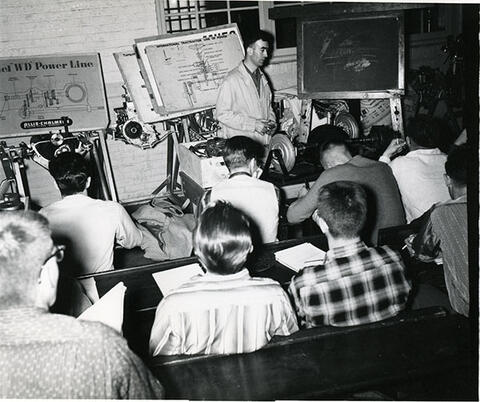
Área de título y declaración de responsabilidad
Título apropiado
Agriculture - Class in Session
Tipo general de material
- Graphic material
Título paralelo
Otra información de título
Título declaración de responsabilidad
Título notas
Nivel de descripción
Item
Institución archivística
Código de referencia
Área de edición
Declaración de edición
Declaración de responsabilidad de edición
Área de detalles específicos de la clase de material
Mención de la escala (cartográfica)
Mención de proyección (cartográfica)
Mención de coordenadas (cartográfica)
Mención de la escala (arquitectónica)
Jurisdicción de emisión y denominación (filatélico)
Área de fechas de creación
Fecha(s)
-
[ca. 195-?] (Criação)
Área de descripción física
Descripción física
1 photograph : b&w ; 17.6 x 12.5 cm
1 negative : b&w ; 6.1 x 6.1 cm
Área de series editoriales
Título apropiado de las series del editor
Títulos paralelos de serie editorial
Otra información de título de las series editoriales
Declaración de responsabilidad relativa a las series editoriales
Numeración dentro de la serie editorial
Nota en las series editoriales
Área de descripción del archivo
Nombre del productor
Historial de custodia
Alcance y contenido
Students seated and facing instructor in a agricultural mechanics class. View from back of room looking towards instructor. Backboard and diagrams behind instructor.
Bio/Historical Note: Walter C. Murray, University President, saw that the College of Agriculture would keep the university close to the life of the people. Between 1909-1912, before they had teaching space, the agriculture faculty developed the agriculture farm and traveled doing extension work, most significantly, with the Better Farming Train. The Saskatchewan Minister of Agriculture, W.R. Motherwell, supported extension work with tax revenue funds. In October 1912, the first agriculture class was taught. Both a 3-year associate course and a degree course were available. In 1937 the associate program became the School of Agriculture. The school responded to local farming problems by teaching and research and with new departments directed to these areas.

